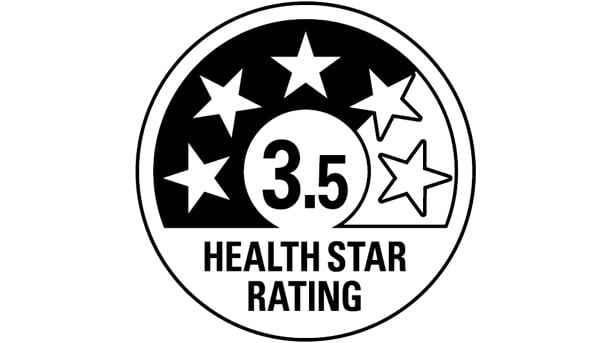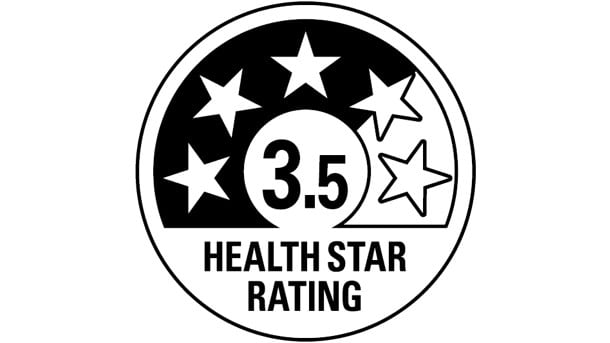The debate was reignited over the recently-published draft of the ‘Health Star Rating System Five Year Review Report’ by consultancy firm mpconsulting, which was set to recommend that the HSR System be continued as a ‘voluntary Front-of-Pack Label (FoPL) scheme’.
However, the draft was published ahead of the deadline for accepting public comment, and various consumer and health groups responded by preparing comments opposing this.
Amongst these, consumer organization Choice said that: “Without HSRs being displayed on the majority of products, no amount of consumer education will help overcome the challenges that consumers face when comparing products with inconsistent labelling.”
Cancer Council Australia concurred, saying that a mandatory system would abide by recommendations made by the Senate Inquiry into the Obesity Epidemic as well as ‘public health justifications’.
“Although the draft review states that front of pack labelling is voluntary in most countries, this is not reflective of recent trends with many countries recently adopting mandatory systems,” it said.
Academics had previously also called out the HSR System for its low and selective uptake rate and to be confusing consumers due to dual use with the Nutrient Profiling Scoring Criterion (NPSC), but this has been disputed by the Australian food industry.
“Uptake of the voluntary system in Australia has been faster than many comparable systems overseas,” Australian Food and Grocery Council (AFGC) Communications Director James Matthews told FoodNavigator-Asia.
“Recent monitoring confirms the continuing uptake by industry. Criticism of the system on this basis is misguided.”
He added that the AFGC fully supported the continuation of the HSR system ‘with appropriate refinement’, claiming that ‘locking [the system] in regulation’ would inhibit it ‘maintaining the flexibility [to adapt to] changes in nutrition science’.
“[The HSR] has proved its potential as a successful public health intervention with monitoring, demonstrating it has the support and trust of consumers with many using it to guide their food and diet choices,” said Matthews.
“With appropriate ongoing support from Government and industry, uptake will increase and the system can remain voluntary.”
The HSR Five Year Review
The HSR Five Year Review was commissioned by the Australian Government to ‘examine the impact of the System, the extent to which the objectives of the System have been met and to identify how the System could be improved’.
The review report recommended that the HSR System be continued on a voluntary basis because ‘despite challenges in measuring public health impact’, data had indicated the System to be ‘well used, recognised, reliable and have the potential to be a successful public health intervention’.
“[Recent] Australian survey data showed that of consumers purchasing a product displaying the HSR in the last three months, almost two-thirds stated that the HSR influenced their decision and one-third were influenced to purchase a product with more stars,” said the report authors.
“This equates to 23% of all consumers being influenced by the HSR to change their purchasing behaviour to purchase a product with more stars.”
The report also stated that the HSR System ‘is encouraging positive reformulation’, citing ‘statistically significant reductions in energy and saturated fat content in products displaying the HSR’ across the four years since the System was introduced as compared to those without HSR.
Improvements
That said, the report acknowledged that the System was not without its flaws, and recommended a series of improvements.
Amongst these was to make adjustments to the HSR Calculator to better reflect current dietary guidelines.
The authors anticipated that this move would see decreases to the HSRs of approximately 8% of products (mostly discretionary/junk foods) and increases to the HSRs of approximately 15% of products (e.g. fruits and vegetables).
Better management and monitoring of the HSR System was also recommended, to ensure the responsiveness of the System to both industry and consumer concerns
Another key recommendation was the establishment of uptake targets for the System, and this was set for 70% of target products by 2023.
“Consistent and widespread adoption of the HSR is required for the System to have a significant public health impact,” said the authors.
“In 2018, the HSR was displayed on 31% of eligible foods in Australia and 21% of eligible foods in New Zealand. [We] recommend an uptake target of 70% of target products displaying the HSR by end 2023 [as participation data] suggests that the uptake trajectory makes this attainable.”




